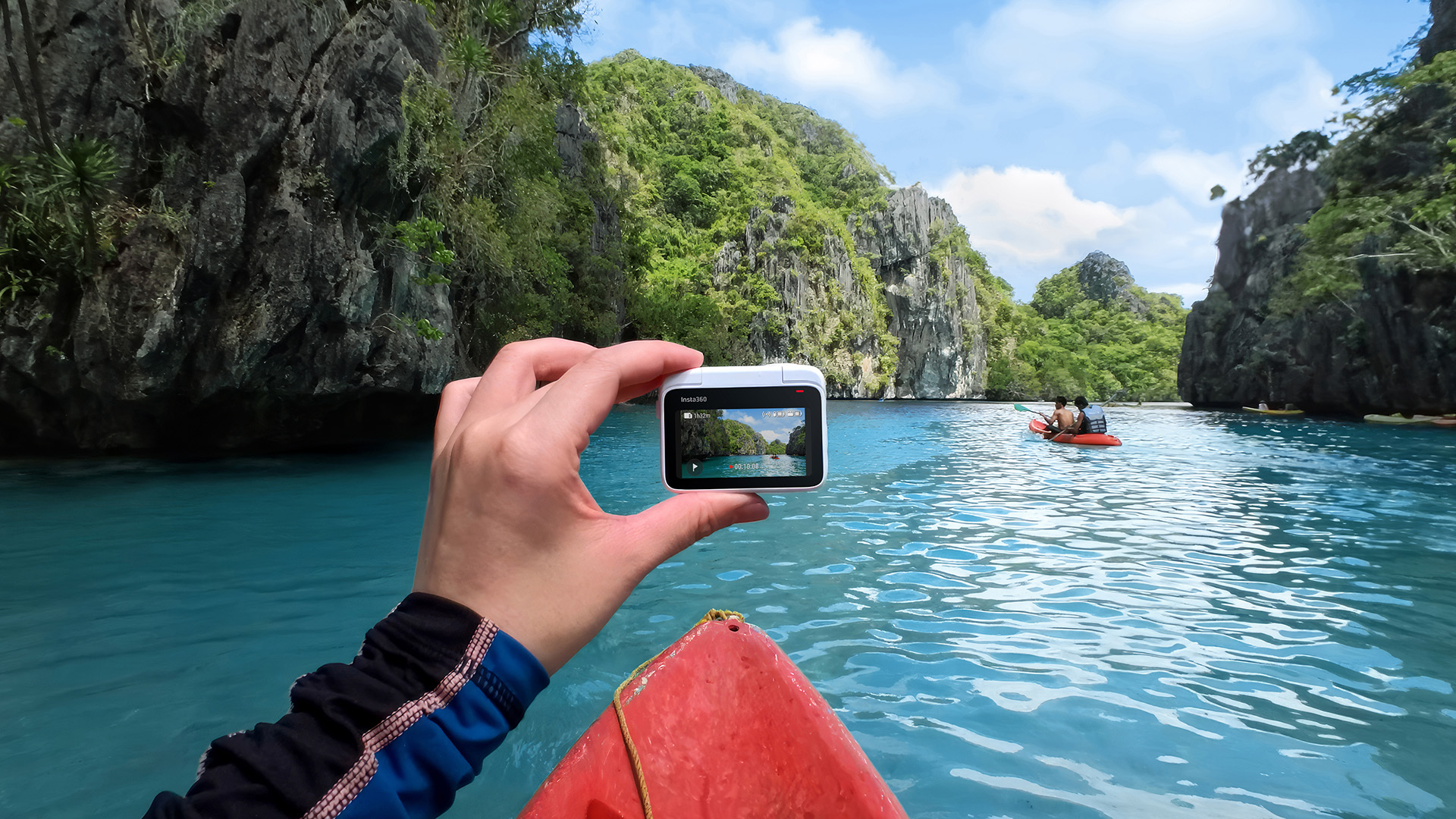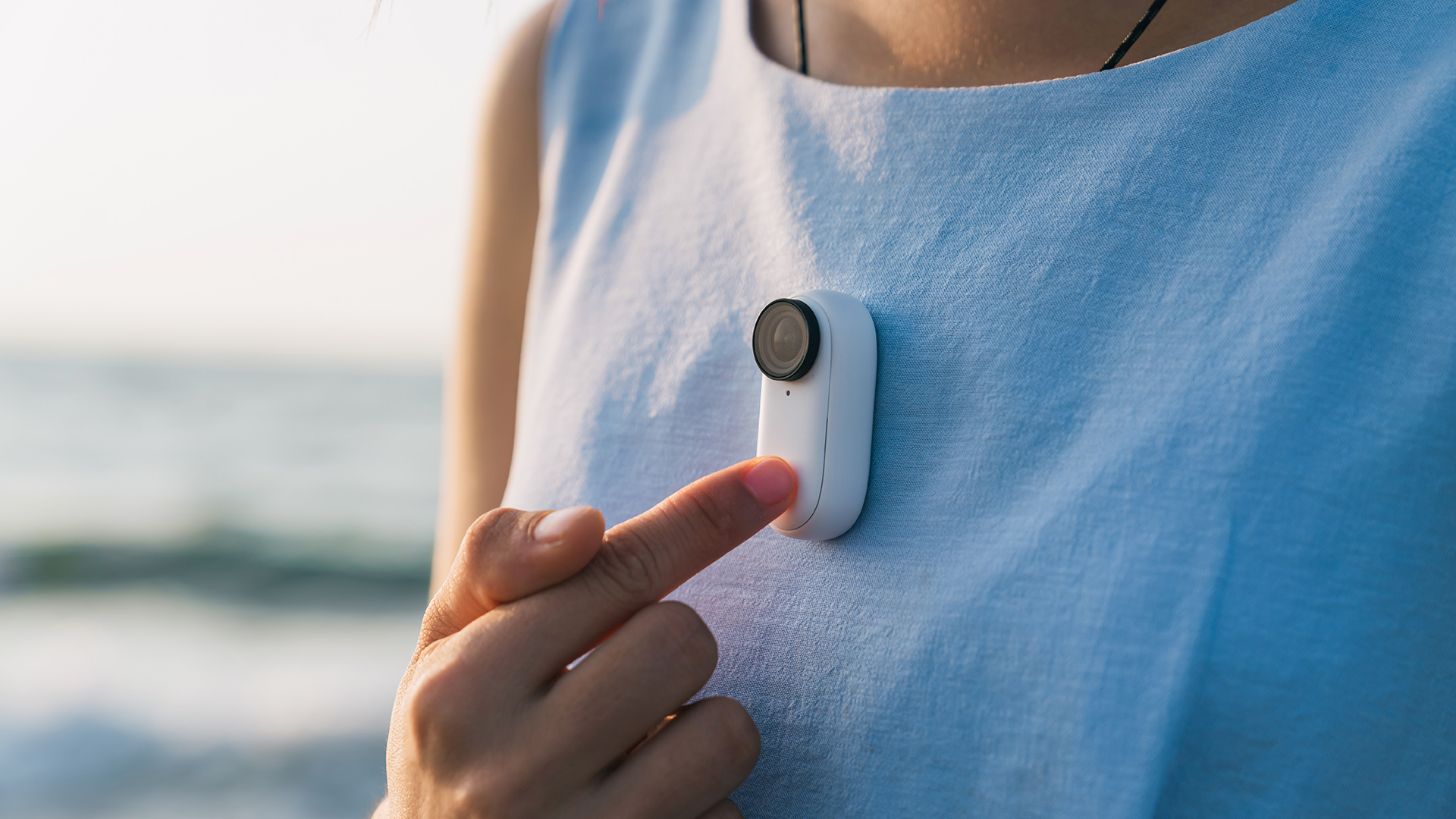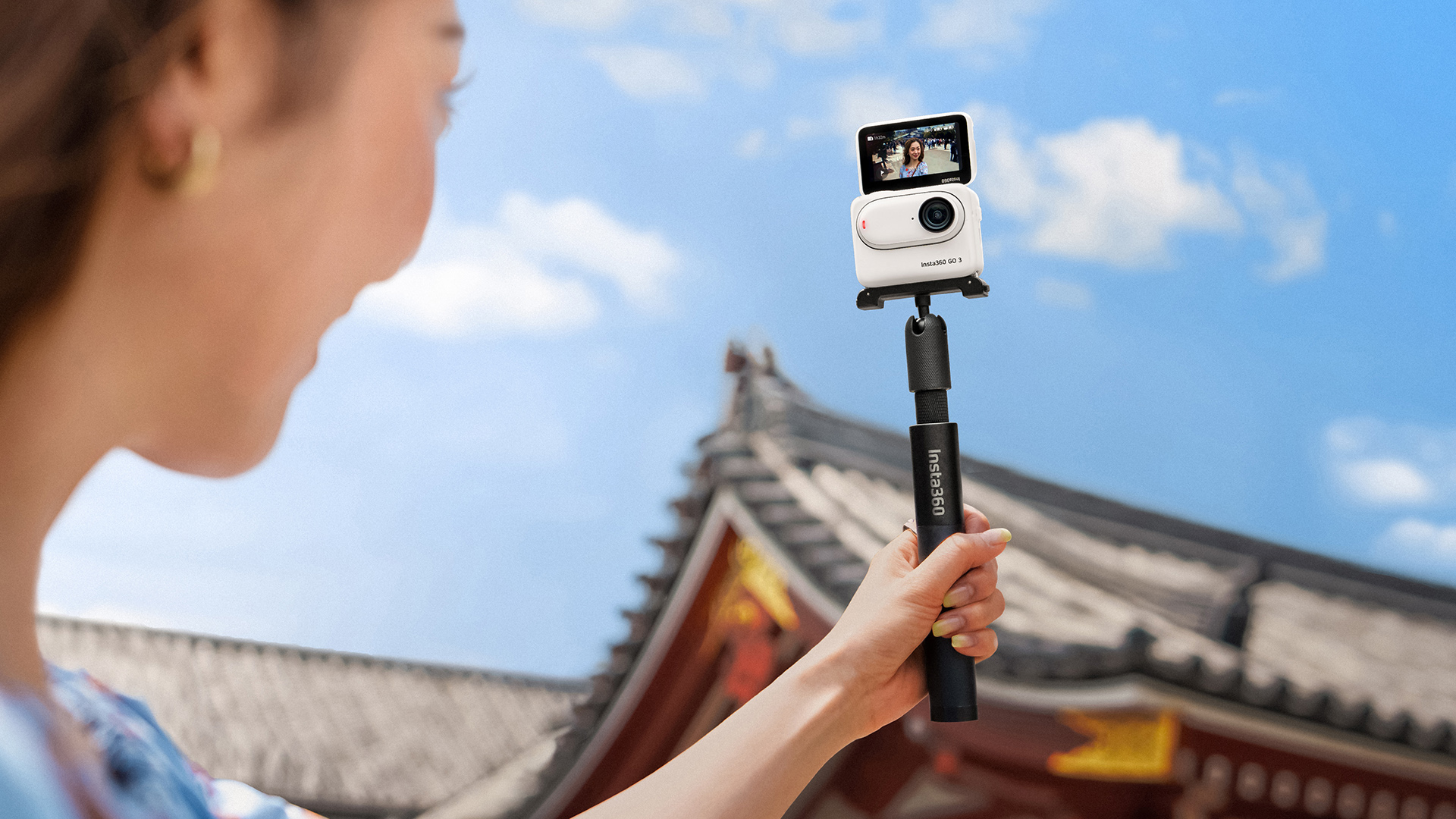Insta360 GO 3 vs Insta360 GO 2: battle of the ultra-portable action cameras
Which thumb-sized shooter is best?


What is the difference between the Insta360's latest mini action camera, the Insta360 GO 3 and its predecessor, the Insta360 GO 2? Here's what you need to know before you make a purchase.
Since its debut in 2019, Insta360's thumb-sized GO has been a unique proposition in the best action camera niche. Back in the day, while the best GoPros were busy improving image resolution and stabilisation, the GO offered something different: a tiny size and magnetic backplate meant it could be discretely mounted on clothing for the ultimate in POV and hyper lapses.
Four years later, however, Insta360 GO 2, and now Insta360 GO 3 have upped the ante and tweaked the concept. Launched in 2021 and 2023, respectively, Insta360 GO 2 and Insta360 GO 3 retain that versatility but have significant upgrades. Increases in battery life and resolution are expected with each new generation of a camera, of course, but as well as new features, the latest GO models have evolved the form factor into something that can arguably become a rival to the GoPro Hero 11 Black Mini, if not quite the GoPro Hero 11 Black.
Insta360 GO 3 vs Insta360 GO 2: price and extras
The Insta360 GO 2 launched in March 2021 with an RRP of GBP £295/ $300/ AU$ 480, while the Insta360 GO 3 launched in June 2023 with an RRP of £380/ $380 / AU$ 662 for the 32GB version, £400/ $400/ AU$ 702 for the 64GB version and £430/ $430/ AU$742 for the 128GB version.
Those prices mean the GO 3 arguably tumbles out of the best cheap action camera rankings and brings it into line with the top-of-the-range action cameras. Besides, GO 3’s Action Pod case now makes it physically more alike to a standard-size action camera.
WINNER: Insta360 GO 2, due to the fact that the Go 3 costs more than a standard action cam, which we're sure fans of the GO 2 won't appreciate.

The Insta360 GO 2's magnetic body weighs just 26.5g
Insta360 GO 3 vs Insta360 GO 2: design and build quality
The concept behind the Insta360 GO is a miniature camera that’s more convenient to use to capture video than either a smartphone or a bulky action camera. The Insta360 GO 2, and Insta360 GO 3 are, at their core, identical, but check the accessories they come with and an evolving concept is revealed that makes the GO 2 and GO 3 look and feel significantly different.
Get all the latest news, reviews, deals and buying guides on gorgeous tech, home and active products from the T3 experts
Insta360 GO 2 has a magnetic body that measures 22x22x20 mm and weighs just 26.5g. It’s waterproof to 13 feet/4 metres and has a maximum of 150 minutes of battery life. However, most of that is down to its slim 63.5g charging case, which adds 120 minutes to the camera’s built-in 30 minutes. It’s equipped with Bluetooth 5.0 and has 32GB of built-in storage.
Insta360 GO 3 is a slightly different beast. The camera itself is physically near-identical, though weighs 35.5g. It’s waterproof to a slightly deeper 16 feet/5 metres and goes for 173 minutes. That’s 45 minutes from the camera itself and further 128 minutes from its all-new Action Pod. Unlike the battery case supplied with the Insta360 GO 2, Insta360 GO 3’s Action Pod is IPX4 water-resistant and sports a 2.2-inch flip touch screen, which brings vlogging and purposeful composition to the GO for the first time. Insta360 GO 3 comes with Bluetooth 5.3 and up to 128GB of storage.

The Insta360 GO 3's Action Pod is the main point of difference in hardware
That Action Pod – which can, like the charging case before it, be used as a wireless remote control – is the main point of difference in hardware. Both products come with a magnet pendant to hang around the neck, a clip for attaching the camera to a cap, bag strap or cat collar (!), a pivot stand with a sticky pad and a lens guard.
For the Insta360 GO 3, the pivot stand has a 1/4-inch tripod adaptor as well as a few new optional extra accessories; an action sport-centric quick-release mount (which adds a 1/4-inch adaptor), a mini 2-in-1 tripod/selfie stick, a flexible monkey tail mount (like a GorillaPod) for the pivot stand and, bizarrely, a fetch stick for dogs.
So while Insta360 GO 3 is a significantly bulkier 131g in total to Insta360 GO 2’s 90g, it adds a host of new hardware features – crucially, accurate vlogging and composition – and enables 23 minutes more battery life.
WINNER: the Insta360 GO 3 elevated the versatility of the small action camera to the next level without compromising the compact form factor of the small unit, enabling creators to create more diverse footage using just one piece of equipment.

The Insta360 GO 3 reaches 2.7K resolution at up to 30fps
Insta360 GO 3 vs Insta360 GO 2: video and sound quality
Although some features are the same – including Insta360’s impressive FlowState Stabilization (three levels of image stabilization), 360 Horizon Lock for video and Night Shot, StarLapse (a Timelapse at night) and PureShot for photos – one noticeable difference between the two products is resolution.
While the Insta360 GO 2 maxes out at 1440p at up to 50fps, the Insta360 GO 3 reaches 2.7K at up to 30fps. That might sound like a big upgrade, but 1440p – also called QHD or 2K – is 2560x1440 pixels (3.7 megapixels), while 2.7K is 2704x1520 pixels (4.1 megapixels). That’s not a huge difference, though the Insta360 GO 3 also boasts colour optimisation and many other new options.
That said, content creators will appreciate the ease with which you can swap between horizontal and vertical video modes. The Go 2 was infamous for being very fiddly for shooting vertical videos; most of the mounting options only allowed for horizontal video shooting, which you had to crop in post, compromising video quality. You can shoot vertical videos with the Insta360 GO 3 at full resonation much easier, thanks to the Action Pod and the pendant accommodating more than just one mounting option.

The GO 2 offers six modes: Video, Pro Video, HDR, Timelapse, TimeShift (hyperlapse) and Slow Motion (1920x1080 at 120fps)
The Insta360 GO 2 offers six modes: Video, Pro Video, HDR, Timelapse, TimeShift (hyperlapse) and Slow Motion (1920x1080 at 120fps). The Insta360 GO 3 replaces Pro Video and HDR with FreeFrame – which allows aspect-ratio adjustments and reframing to tweak the shooting angle after capture but deals only in 1440p resolution – and adds Pre-recording, Loop Recording, Timed Capture (auto-start at a scheduled time) and an improved Slow Motion mode (1440p at 120 fps).
The newer version also includes improved heat dissipation, essential for shooting long videos. When shooting, Insta360 GO 3 permits a range of aspect ratios: UltraWide (best for selfie vlogs), ActionView (for cycling and driving), Linear (for general use) and Narrow for a zoomed-in look). On audio, Insta360 GO 3 adds dual microphones and voice control with “Take a photo”, “Start recording”, and “Stop recording” among the commands.
WINNER: The Insta360 GO 3 ups the ante in functionality and offers more freedom to create content easier for social media and beyond.

With the flip touch screen and many mounting options added to its arsenal, the Insta360 GO 3 is arguably the most versatile action camera
Insta360 GO 3 vs Insta360 GO 2: which should you buy?
If you want to create POV content, then it's hard to beat the Insta360 GO 2 as a concept, if only for its tiny size and versatile mounting options. However, if you want to squeeze out a little more detail and battery life and use the GO as an all-in-one action camera like you might use a GoPro, the new and improved Insta360 GO 3 is the way to go. Sure, it hasn't got the resolution of top-tier GoPros, but with the flip touch screen and many mounting options added to its arsenal, the Insta360 GO 3 is arguably the most versatile action camera.
Jamie is a freelance journalist, copywriter and author with 20 years' experience. He's written journalism for over 50 publications and websites and, when he's not writing, spending most of his time travelling – putting the latest travel tech through its paces.
